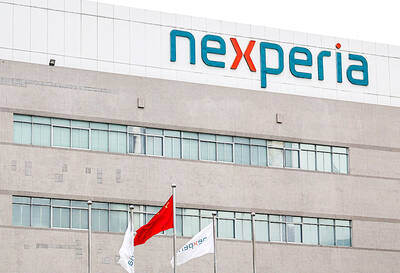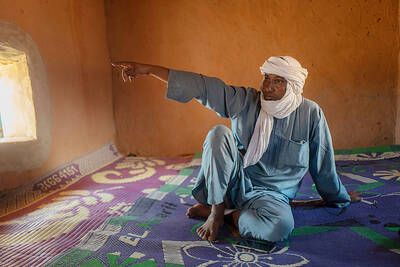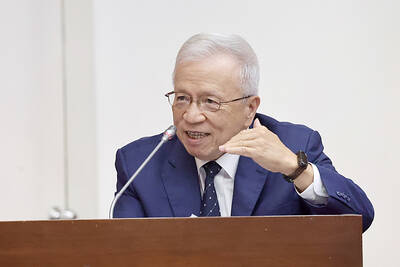Africa’s lag in land-based telecoms infrastructure has propelled the continent directly into the mobile age, opening up unparalleled short-term growth prospects.
Sector players have seen growth especially in mobile Internet and banking services, as people use cellphone technology for lack of landlines or cable Internet.
“Africa is the last market to emerge. China’s emerged, India’s emerged. So where else outside Africa needs emerging? The growth opportunity is right here,” said Nicolas Regisford, co-founder of Mi-Fone, a South African company that specializes in producing low-cost handsets.
Mobile subscribers in Africa have increased by 20 percent annually over the past five years and will reach more than 735 million by the end of next year, a study by global mobile operators association GSMA found last month.
“Africa is now the world’s second-largest mobile market by connections after Asia, and the fastest growing mobile market in the world,” according to the GSMA Africa Mobile Observatory 2011 report.
Industry players are equally excited over the commercial prospects posed by the continent’s 1 billion people.
ENTRY-LEVEL PHONES
“Samsung is expecting revenue within Africa to amount US$15 billion, with the SADC [Southern African Development Community] region contributing about 25 percent of that figure, by 2015,” said Gavin Clare, the company’s representative in Zimbabwe.
This philosophy also drives Mi-Fone, which eyes the immense market of consumers seeking entry-level phones.
“The African person wants a mobile device which will be doing mobile payments and accessing the world wide Web. Right now, a lot of people cannot afford the smartphones that are flooding the market,” Regisford said.
Ironically, this lack of traditional infrastructure, telecom and landline services, Internet penetration and broadband access, and banking services drives this growth in Africa, according to mobile systems expert Tomi Ahonen.
“As it happens, the global Internet industry believes that the future of Internet is mobile. The global telecom industry believes that the future of the telecom industry is mobile and the global money industry is starting to believe that the future of money is mobile,” Ahonen said.
One case in point is Kenya, already the world’s largest mobile financial services user in relation to its GDP. Almost 18 million Kenyans use their cellphones as a bank account to deposit or transfer money — contributing 8 percent of the GDP and several other African countries are following suit.
TEXTS AND CALLS
The “maturity of the market,” as financiers call it, is another asset. Applications dominate the mobile world in Europe and the US, but earn relatively little. On the other hand, the mobile business in Africa keeps earning through more conventional services like text messages and voice calls.
“The business model around the basic services on mobile are much more realistic and robust,” Ahonen said at a workshop in Johannesburg last month.
This cellphone explosion in Africa contributes as much as US$56 billion to the region’s economy, or 3.5 percent of its GDP, but the indirect effect on growth is perhaps even higher.
“Local development of telecommunication has a direct impact on GDP. This is a professional tool. Many handcrafters or retailers dramatically need to be connected to the world to make business,” Regisford said.
“In developing countries, for every 10 percent increase in mobile penetration, there is a 0.81 percentage point increase in a country’s GDP,” the GSMA report found.

JITTERS: Nexperia has a 20 percent market share for chips powering simpler features such as window controls, and changing supply chains could take years European carmakers are looking into ways to scratch components made with parts from China, spooked by deepening geopolitical spats playing out through chipmaker Nexperia BV and Beijing’s export controls on rare earths. To protect operations from trade ructions, several automakers are pushing major suppliers to find permanent alternatives to Chinese semiconductors, people familiar with the matter said. The industry is considering broader changes to its supply chain to adapt to shifting geopolitics, Europe’s main suppliers lobby CLEPA head Matthias Zink said. “We had some indications already — questions like: ‘How can you supply me without this dependency on China?’” Zink, who also

At least US$50 million for the freedom of an Emirati sheikh: That is the king’s ransom paid two weeks ago to militants linked to al-Qaeda who are pushing to topple the Malian government and impose Islamic law. Alongside a crippling fuel blockade, the Group for the Support of Islam and Muslims (JNIM) has made kidnapping wealthy foreigners for a ransom a pillar of its strategy of “economic jihad.” Its goal: Oust the junta, which has struggled to contain Mali’s decade-long insurgency since taking power following back-to-back coups in 2020 and 2021, by scaring away investors and paralyzing the west African country’s economy.

BUST FEARS: While a KMT legislator asked if an AI bubble could affect Taiwan, the DGBAS minister said the sector appears on track to continue growing The local property market has cooled down moderately following a series of credit control measures designed to contain speculation, the central bank said yesterday, while remaining tight-lipped about potential rule relaxations. Lawmakers in a meeting of the legislature’s Finance Committee voiced concerns to central bank officials that the credit control measures have adversely affected the government’s tax income and small and medium-sized property developers, with limited positive effects. Housing prices have been climbing since 2016, even when the central bank imposed its first set of control measures in 2020, Chinese Nationalist Party (KMT) Legislator Lo Ting-wei (羅廷瑋) said. “Since the second half of

AI BOOST: Next year, the cloud and networking product business is expected to remain a key revenue pillar for the company, Hon Hai chairman Young Liu said Manufacturing giant Hon Hai Precision Industry Co (鴻海精密) yesterday posted its best third-quarter profit in the company’s history, backed by strong demand for artificial intelligence (AI) servers. Net profit expanded 17 percent annually to NT$57.67 billion (US$1.86 billion) from NT$44.36 billion, the company said. On a quarterly basis, net profit soared 30 percent from NT$44.36 billion, it said. Hon Hai, which is Apple Inc’s primary iPhone assembler and makes servers powered by Nvidia Corp’s AI accelerators, said earnings per share expanded to NT$4.15 from NT$3.55 a year earlier and NT$3.19 in the second quarter. Gross margin improved to 6.35 percent,